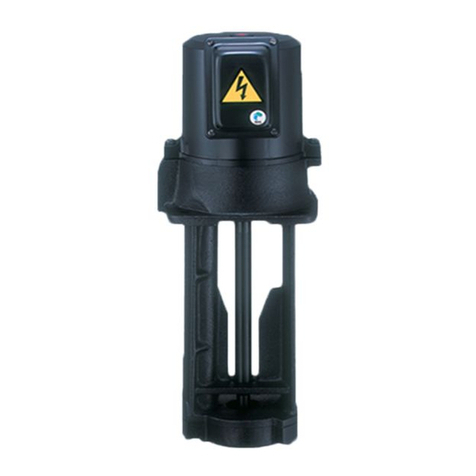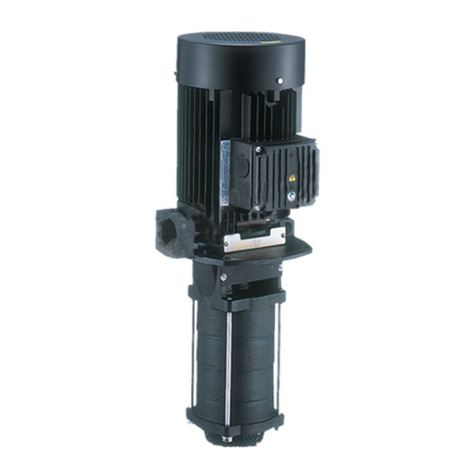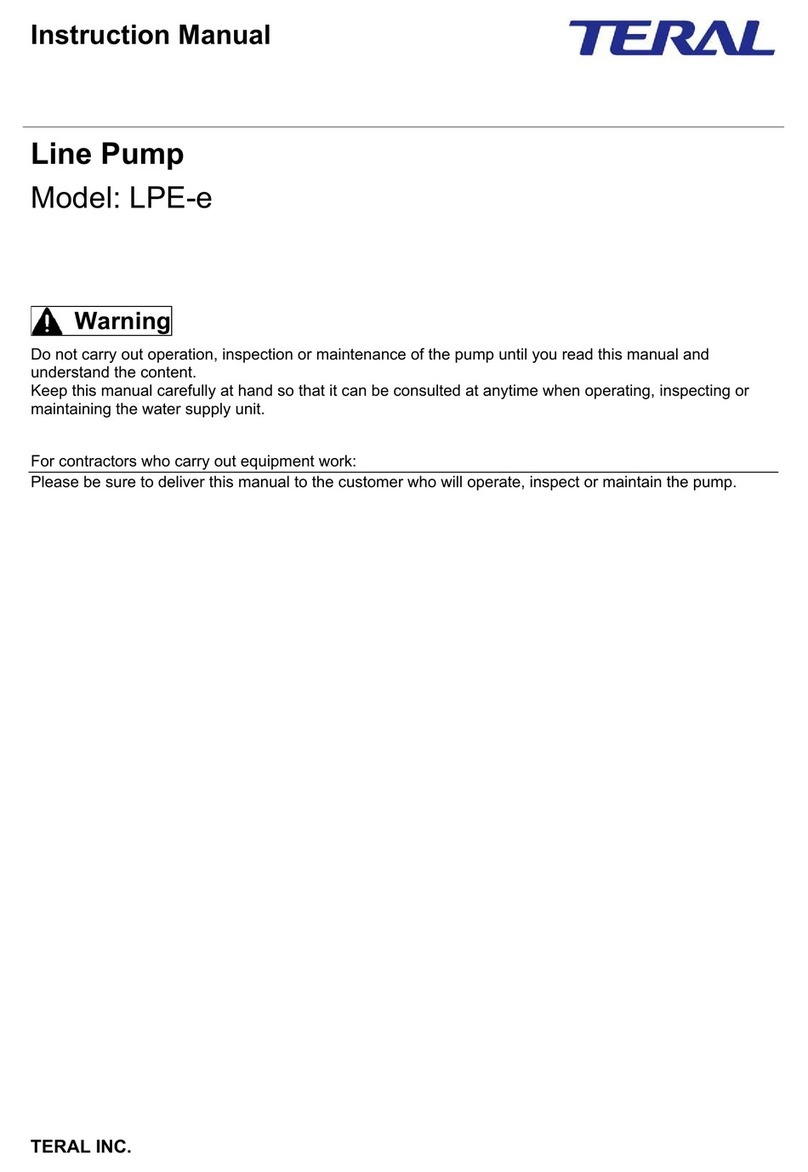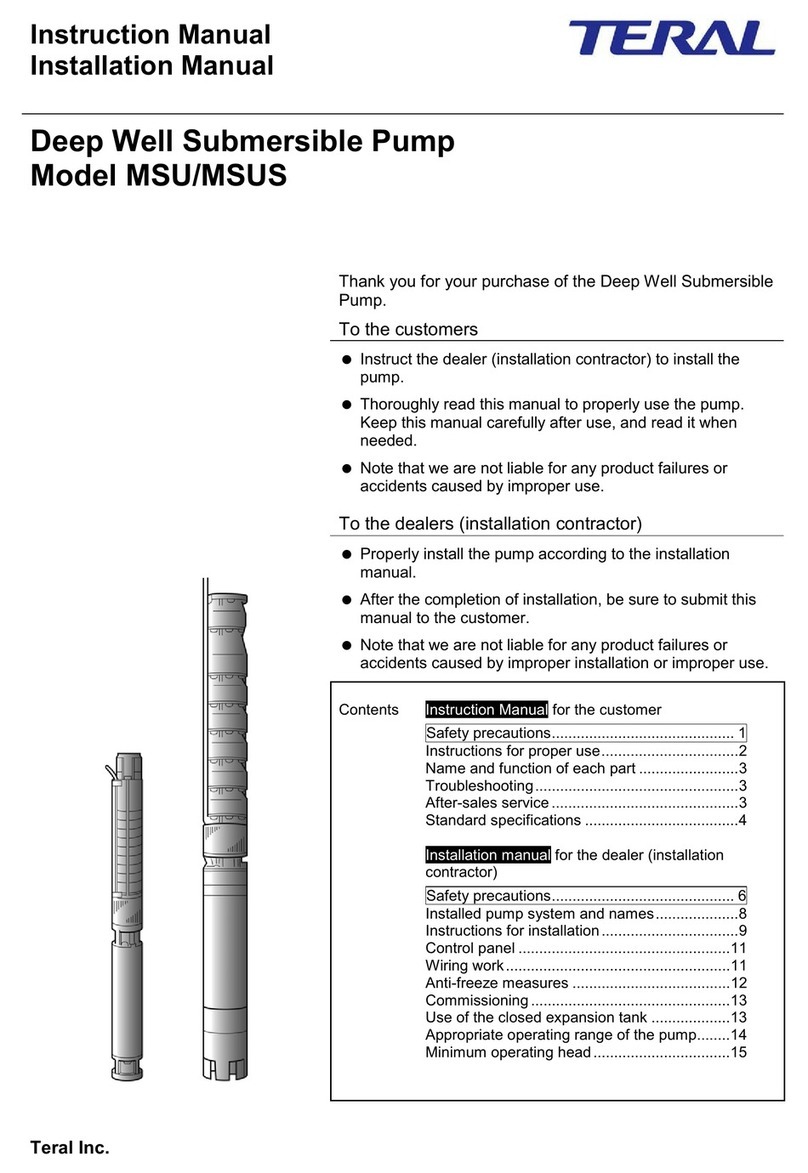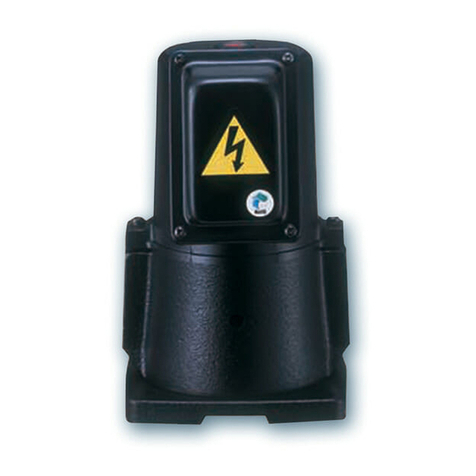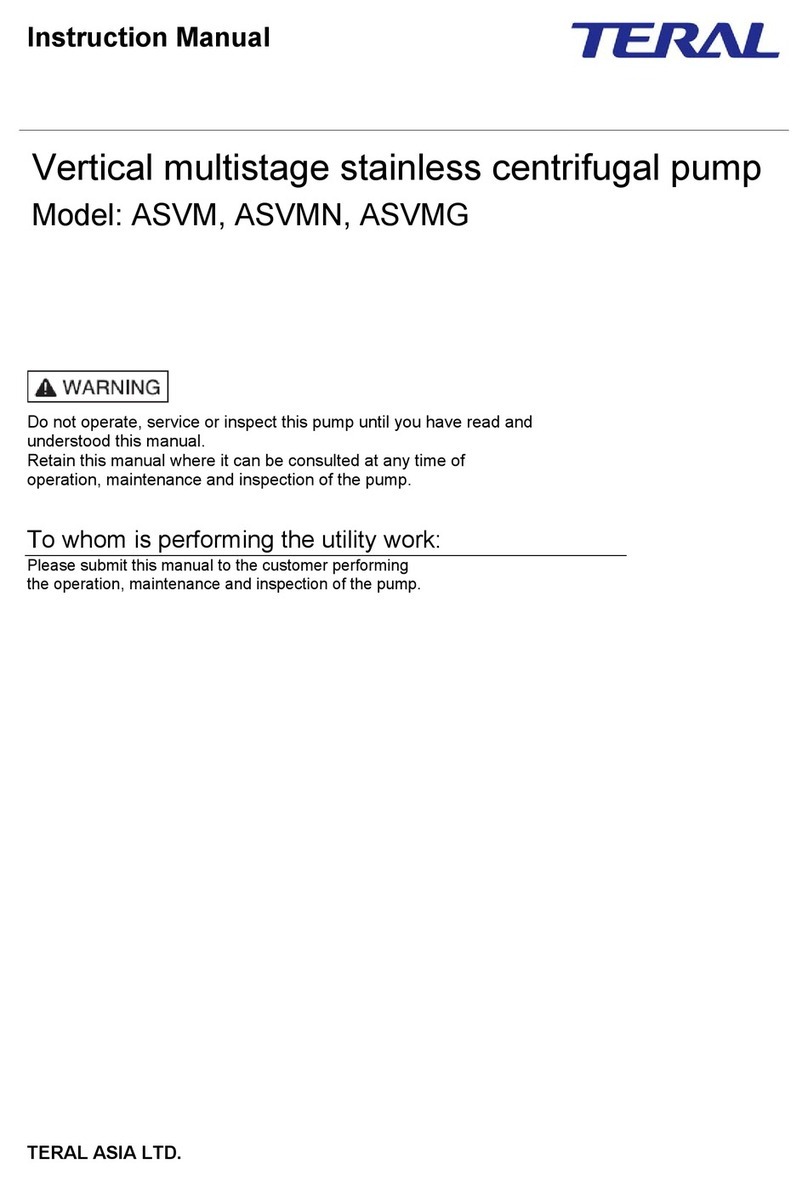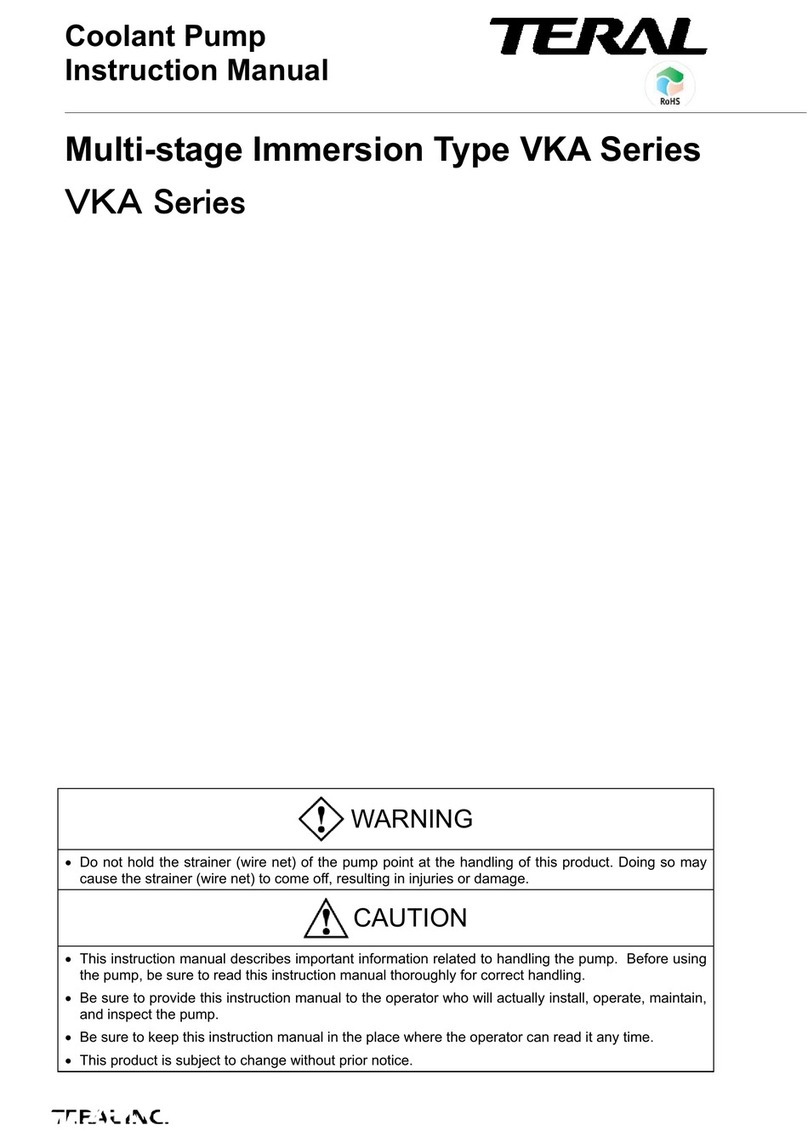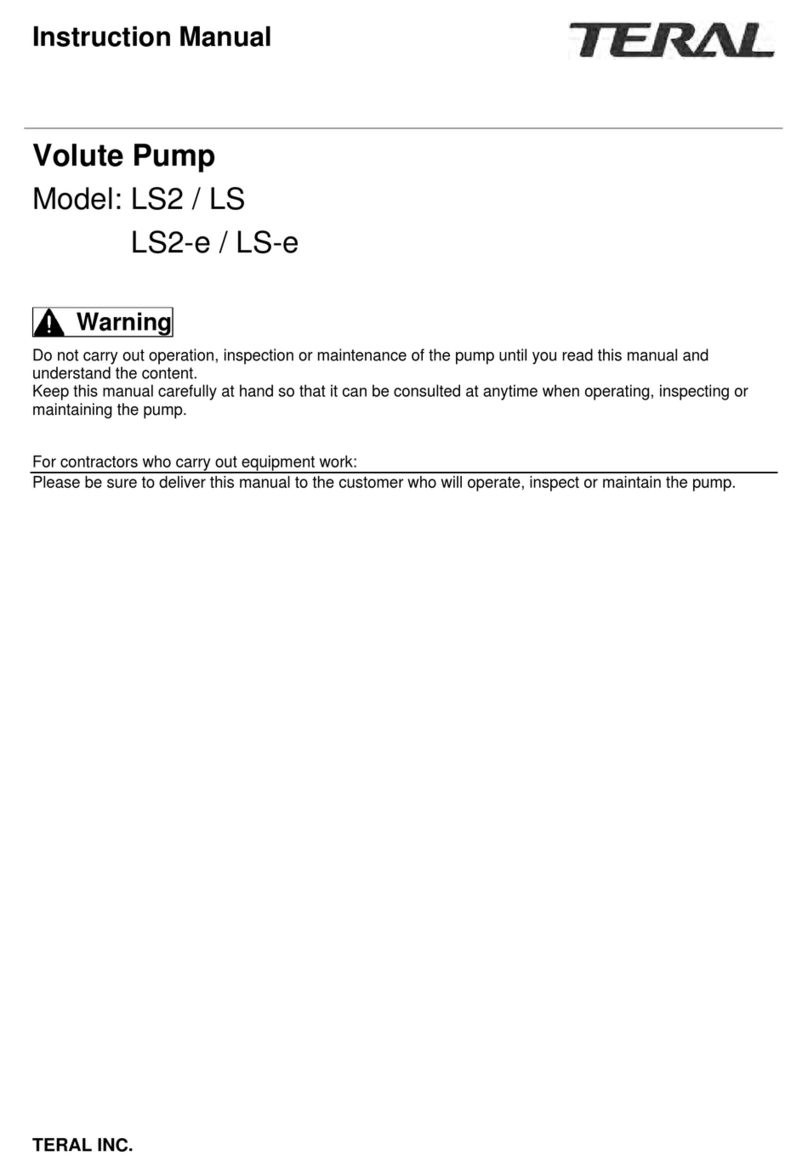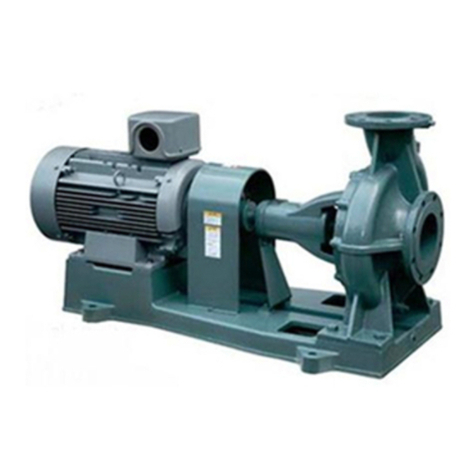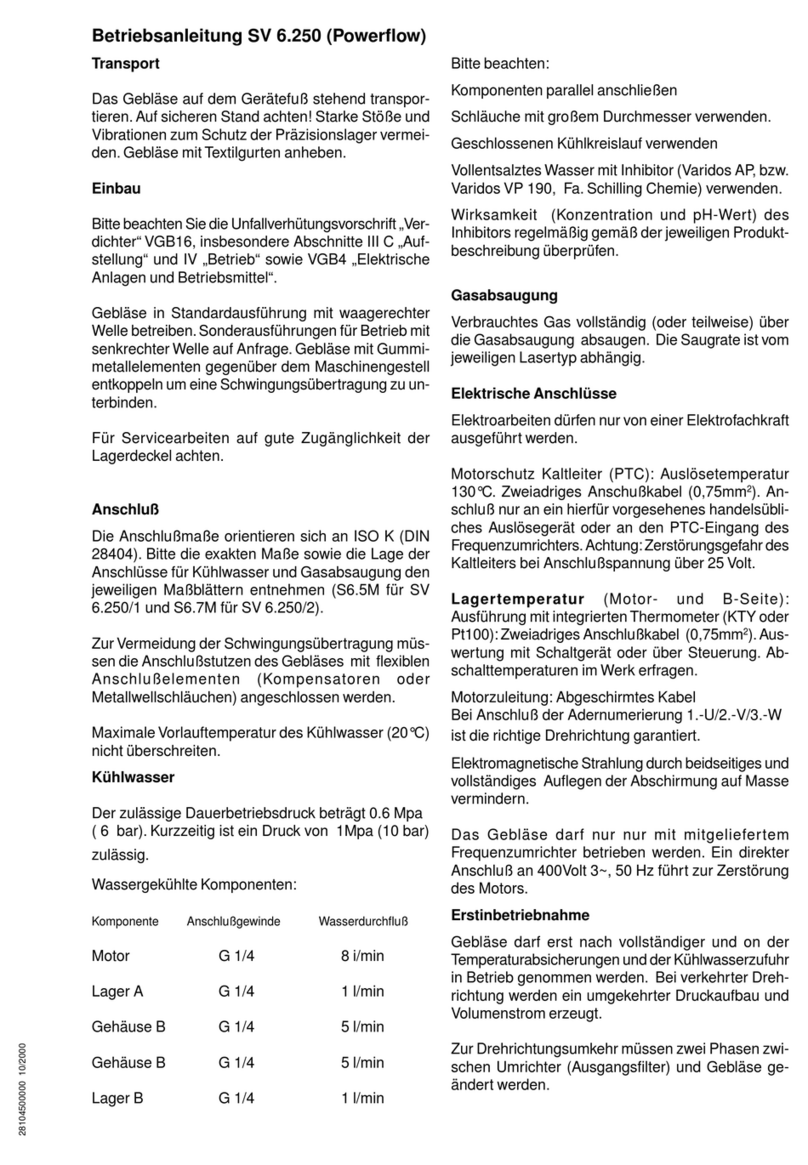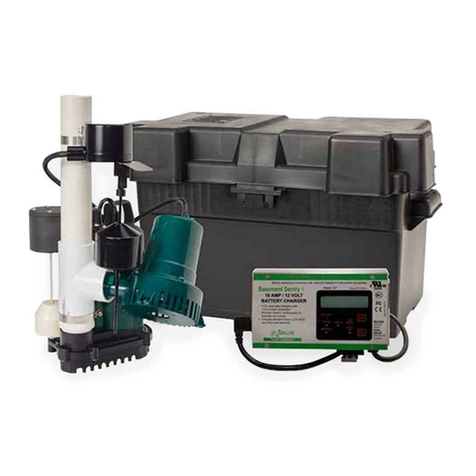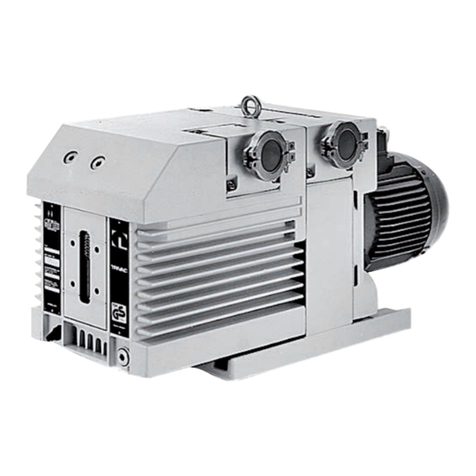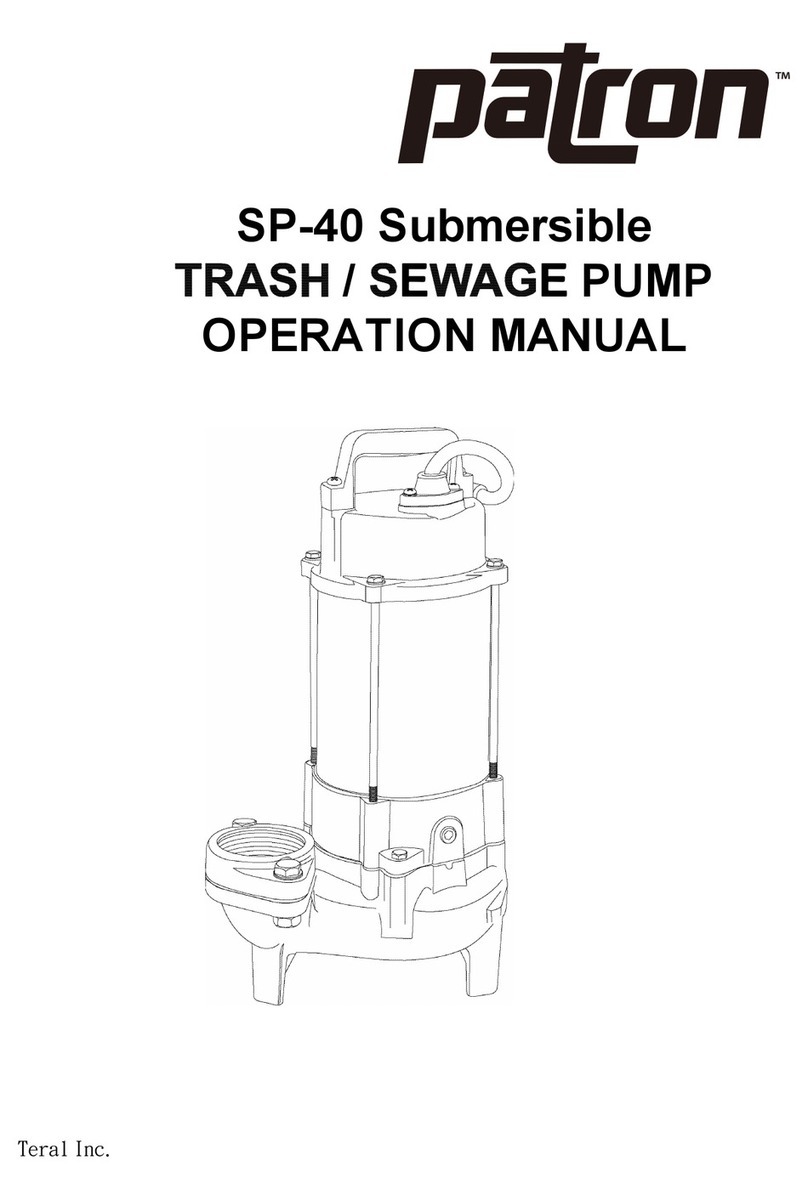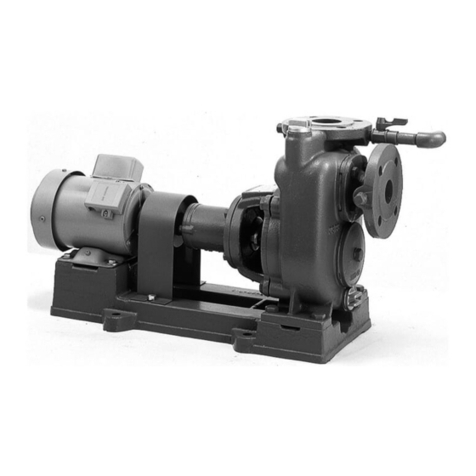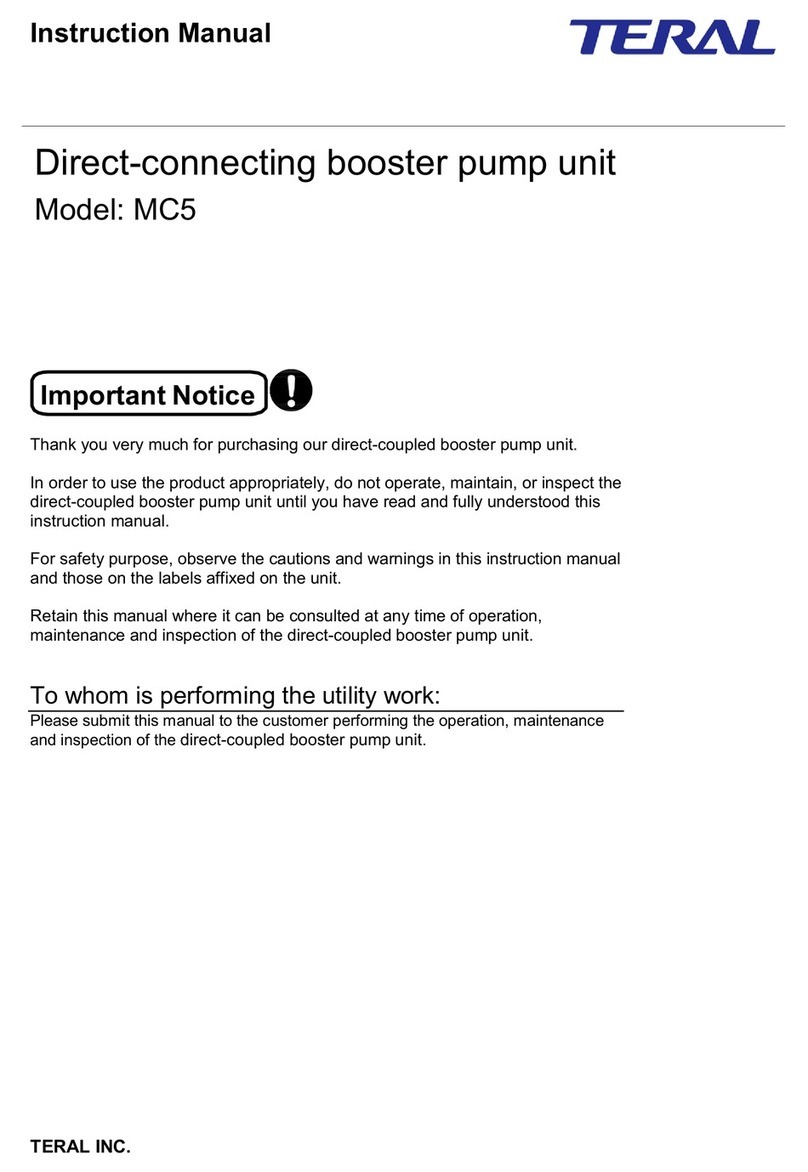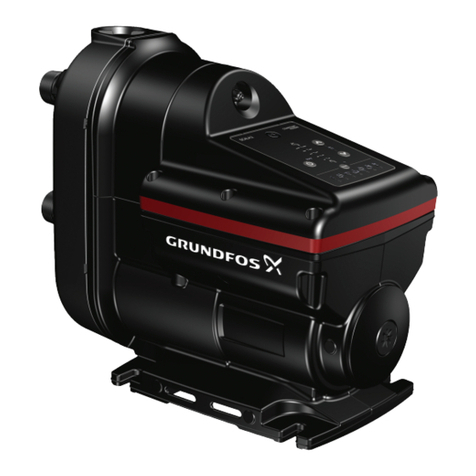
4-1
(4) Install the main power supply cable through a metal pipe or metal duct to shield it, and ground
the outer surface of the pipe/duct.
(5) Control the fluctuation of the power supply voltage within ±10% of the rated voltage and the
frequency within +3 to -5% of the rated frequency. The pump can run while the power is
controlled within this range, but DO NOT run it for a long period if the power is higher/lower
than 5% of rated voltage or higher/lower than 2% of the rated frequency. And even if the
supplied power falls within the allowable range, the pump characteristics, motor characteristics,
and the temperature rise of the motor may differ from those shown at the power of rated
voltage and frequency.
(6) Cautions for inverter driven operation
• The operating current must not exceed 90% of the rated current.
• The operating frequency should be at least 20Hz.
• Do not use an inverter to drive a motor when using a 400V class motor.
• An inverter-driven motor can generate a magnetic sound and thus make a more
unpleasant sound than those driven by commercial power supply.
Although this magnetic sound does not cause an adverse effect on the quality of the
motor, some inverters allow the user to adjust the tone by changing the carrier
frequency. However, changing it may reduce the allowable output of the inverter.
Pay particular attention when selecting the inverter.
4. Preparation for operation
4.1 Checks prior to test operation
4.1.1 Electrical system checks
(1) Check that the wiring has been connected correctly.
(2) Check that terminal connections are secured.
(3) Check that grounding has been carried out properly.
(4) Check that the setting on the overload protection device is the motor’s rated current.
(The device should include the rated current of pump around the middle of its setting range.)
4.1.2 Pump system checks
(1) Check that the level of liquid in the tank is above the lowest liquid level.
(2) Turn the pump by hand, and check that it rotates easily. To turn the pump by hand:
Remove the end cap from the motor shift, Insert a screwdriver into the groove on the end of the
shaft, and turn it.
ALWAYS turn off the main power supply before turning the pump by hand.
(3) Supply priming liquid to the pump from the priming port. When priming is complete, retighten
the plug of the priming port.
4.2 Test operation
Be sure to fit the cover over the motor terminal box.
There is danger of electric shock.
(1) Turn the power switch on and off 1 or 2 times, and check that the pump rotates in the correct
direction. For direct operation model, turn ON in the order of No.1 pump and No.2 pump or
both pumps simultaneously, and turn OFF in the order of No.2 and No.1 or both
simultaneously.The correct direction is clockwise, viewed from the motor end of the pump.
If the pump rotates in the reverse direction, change 2 of the main power cable’s 3 wires.
Do not run the pump in the reverse direction, or it could cause breakdown.
(2) Turn on the power switch, and run the pump.
(3) The normal suction time is about 3 sec. at the maximum (when viscosity is 32cSt).
















